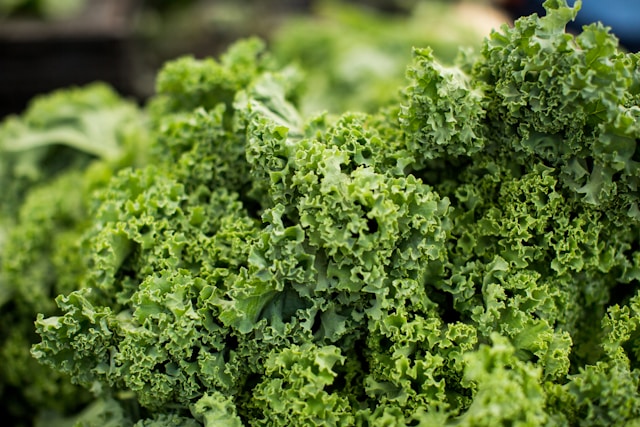Connection of Joints, Cartilage and Aging Process to Osteoarthritis
June 13, 2018
Moving, walking and exercising throughout life can be hard on your cartilage. Cartilage is the soft connective tissue that covers the ends of bones. When this cartilage degenerates, chronic inflammation is caused in joints and it may further cause arthritis. The most common form of arthritis is osteoarthritis (OA). To prevent or at least reduce its possibilities, it’s essential to learn about joints, cartilage and aging process. Therefore Earth’s Wisdom is today going to tell you about them.
Understanding Joints
The job of cartilage is to cushion joints and help them move easily and smoothly. Cartilage is kept healthy by a thick fluid which is produced by a membrane known as synovium. With the wear and tear of cartilage, synovium can be thickened and inflamed, which may further result in inflammation. Due to the inflammation extra fluid is produced within the joint which leads to swelling and probably develops osteoarthritis (OA).
Joints that commonly fall prey to OA are:
- Hands
- Spine
- Hips
- Knees
- Feet
With the further deterioration of cartilage, nearby bones may not get enough cushioning from cartilage and lubrication from synovial fluid. When such bones get in touch with each other, surrounding tissues have to suffer additional pain and inflammation.
When bones rub against each other continuously, they may become thicker and start growing osteophytes or bone spurs.
Aging of Body
With age, people start experiencing mild aching in joints while standing, climbing stairs or exercising. The body is unable to recover as quickly as it did in young age.
Cartilage also starts weakening naturally which may lead to soreness. Its cushioning around joints that help them move more smoothly starts vanishing with age. These are body’s shock absorbers and they start wearing out.
Bone strength and muscle tone too are lost with age. This can make physically hard tasks even more challenging and taxing on the body.
Risk Factors for Osteoarthritis
The most common and prominent risk factor for OA is age. Most OA patients are more than the age of 55. There are other factors as well that increase the chances of a person for developing the disease. They are as follows:
Family History
Genetics may play an important role in developing OA. If any of your family members had OA your risk of developing the disease increases.
Gender
OA is more likely to develop in men before the age of 45 and in women after 50. However, at the age of 80 the likelihood of developing OA in both the genders becomes almost the same.
Weight
When your weight is more than normal, extra stress is exerted on joints, bones and cartilage, especially in hips and knees. Extra weight also increases your chances of being physically less active. Regular physical activity can dramatically lessen the chances of developing OA by lessening the weight.
Occupation
There are certain occupations which increase the risk of developing OA in a person. These are:
- Farming
- Construction
- Retail
- Cleaning
These occupations demand more vigorous use of bodies because of which more wear and tear of joints takes place leading to more inflammation.
OA can be developed in younger and more active people too. However, it’s usually because of a trauma, such as an accident or sports injury. Accidents or physical injuries taken place in the past also increase the likeliness of developing OA later in life.
Treatment
As such, OA has no cure. So, treatment only includes pain management which is done with medications, workout and physical therapy. Treatment is customized based on the person’s lifestyle and things that trigger pain.
Home remedies too can be taken for OA and they include low-impact exercise to improve joint mobility, warm compresses or cold packs, assistive devices like splints, braces and canes to support weak joints, rest and weight loss.
Take care of your joints as you age by controlling your weight and keeping yourself physically active. If you still develop OA, talk to your doctor and check your treatment options.
Earth's Wisdom offers Organic Turmeric formula to combat joint pain. You can get a bottle HERE.
Conclusion
In conclusion, osteoarthritis is a common condition that affects many individuals as they age. It is a degenerative disease that affects the joints, particularly the cartilage that cushions the bones in the joint. As cartilage wears away, it can cause bone-on-bone contact, resulting in pain, inflammation, and stiffness.
Aging is a significant risk factor for osteoarthritis, but other factors such as genetics, joint injuries, and obesity can also contribute to its development. However, there are several preventative measures individuals can take to reduce their risk of developing osteoarthritis, including maintaining a healthy weight, exercising regularly, and protecting joints from injury.
Treatment options for osteoarthritis include a combination of lifestyle changes, medications, and physical therapy. In severe cases, surgery may be necessary to replace or repair damaged joints.
It is important for individuals experiencing joint pain or stiffness to seek medical advice promptly, as early intervention can help slow the progression of the disease and improve overall outcomes. With proper management and treatment, individuals with osteoarthritis can continue to lead active and fulfilling lives.
In summary, while osteoarthritis is a challenging condition, it is treatable, and preventative measures can help reduce the risk of its development. Understanding the connection between joints, cartilage, aging, and osteoarthritis is key to managing the disease and maintaining joint health as we age.
Leave a comment
Comments will be approved before showing up.
Also in Wisdom News

The Importance of Vitamin K2: Unlocking its Role in Health and Wellness
September 22, 2024

The Importance of Omega-3 Fatty Acids: A Comprehensive Review of Their Effects on the Body
August 02, 2024

The Benefits of Mindfulness Meditation for Mental Health
July 12, 2024
Disclaimer: These statements have not been evaluated by the FDA. These products are not intended to diagnose, treat, cure or prevent any disease.
© 2025 Earth's Wisdom®. All Rights Reserved.




